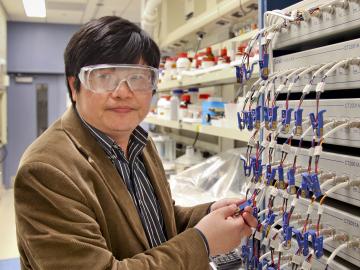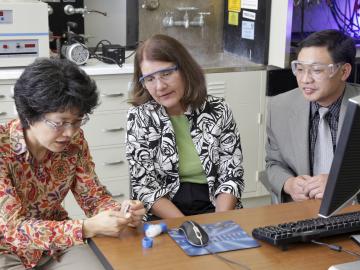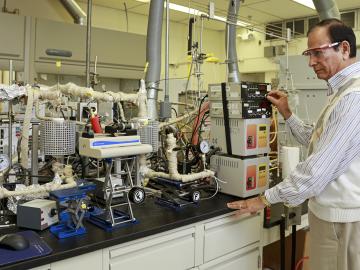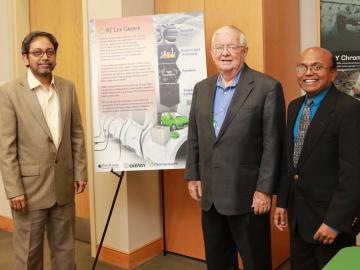Filter News
Area of Research
- (-) Materials (24)
- Advanced Manufacturing (3)
- Biological Systems (3)
- Building Technologies (2)
- Chemistry and Physics at Interfaces (3)
- Clean Energy (24)
- Energy Frontier Research Centers (4)
- Functional Materials for Energy (3)
- Geographic Information Science and Technology (1)
- Isotope Development and Production (1)
- Materials Synthesis from Atoms to Systems (2)
- Materials Under Extremes (3)
- Neutron Science (2)
- Nuclear Science and Technology (3)
- Quantum Condensed Matter (1)
- Reactor Technology (1)
- Supercomputing (7)
- Transportation Systems (2)
News Type
News Topics
Media Contacts

Sheng Dai of the Department of Energy’s Oak Ridge National Laboratory has been named to a list of the most highly cited researchers in the world. Thomson Reuters Highly Cited Researchers is an annual list that recognizes some of the world’s leading


The Department of Energy's Oak Ridge National Laboratory and Solid Power Inc. of Louisville, Colo., have signed an exclusive agreement licensing lithium-sulfur materials for next-generation batteries. The company licensed a portfolio of ORNL patents relating to lit...


Researchers at the Department of Energy’s Oak Ridge National Laboratory have received six R&D 100 Awards, increasing the lab’s total to 193 since the award’s inception in 1963. The competition, sponsored by R&D Magazine, recognizes advances in the nation’s ...

A new study from the Department of Energy’s Oak Ridge National Laboratory explains the mechanism behind a technology that converts bio-based ethanol into hydrocarbon blend-stocks for use as fossil fuel alternatives. Scientists have experimented for decades with a cl...




Engines, laptops and power plants generate waste heat. Thermoelectric materials, which convert temperature gradients to electricity and vice versa, can recover some of that heat and improve energy efficiency. A team of scientists at the Department of Energy’s Oak Ridg...




